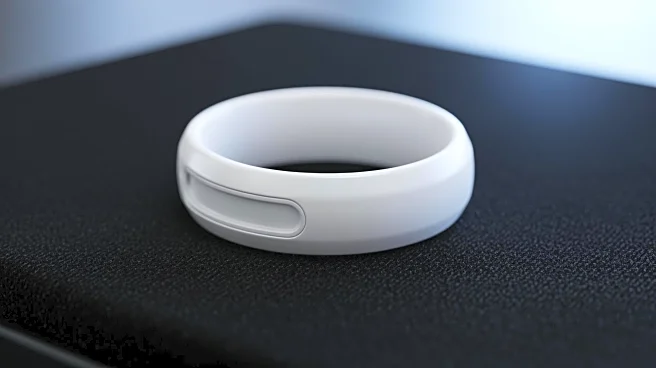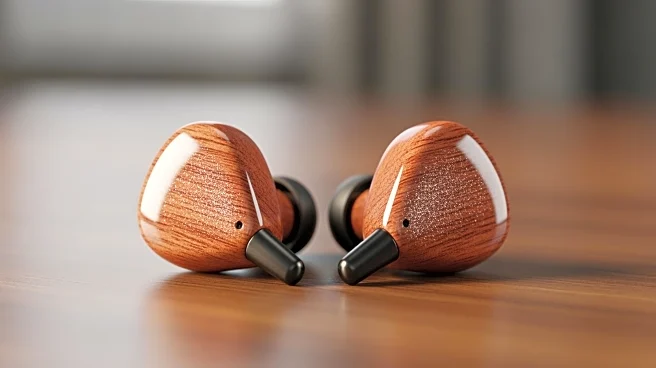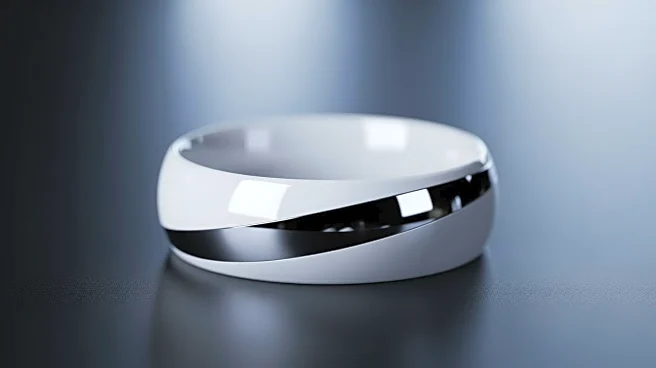What's Happening?
Oura has launched its latest smart ring, the Oura Ring 4 Ceramic, offering a stylish alternative to traditional metallic finishes. Made from zirconia ceramic, the ring is designed for both style and comfort,
available in four colors: Midnight, Cloud, Tide, and Petal. The Ceramic version is slightly thicker and heavier than its predecessor but maintains a comfortable fit. The ring's durability is enhanced by its wear-resistant material, and it is water-resistant up to 100 meters. The Oura Ring 4 Ceramic provides insights into heart health, sleep, and stress through the Oura app, with a battery life lasting between five and eight days.
Why It's Important?
The introduction of the Oura Ring 4 Ceramic reflects the growing demand for aesthetically pleasing wearable technology that integrates seamlessly into everyday life. By offering a stylish alternative to traditional smart rings, Oura caters to consumers seeking both functionality and fashion. The ring's ability to track health metrics aligns with the increasing focus on personal wellness and the use of technology to monitor and improve health outcomes. As wearable technology continues to evolve, the Oura Ring 4 Ceramic may influence consumer preferences, driving demand for devices that prioritize design without compromising on performance.
What's Next?
Oura's launch of the Ring 4 Ceramic may prompt other wearable technology companies to explore similar innovations, focusing on aesthetics and material diversity. As consumers become more interested in stylish wearables, the industry may see a shift towards products that blend fashion with technology. Oura's emphasis on health tracking could lead to further advancements in wearable technology, enhancing the accuracy and scope of health metrics available to users. The success of the Ring 4 Ceramic may also encourage Oura to expand its product line, offering additional color options and features to meet diverse consumer needs.
Beyond the Headlines
The Oura Ring 4 Ceramic highlights broader trends in technology, such as the integration of design and functionality in consumer electronics. This development raises questions about the role of aesthetics in technology adoption and the impact of design on user experience. As wearable technology becomes more prevalent, ethical considerations regarding data privacy and the use of health metrics may emerge, prompting discussions on the balance between innovation and consumer protection. The ring's focus on personal wellness reflects a cultural shift towards proactive health management, influencing how individuals approach their well-being in a technology-driven world.











